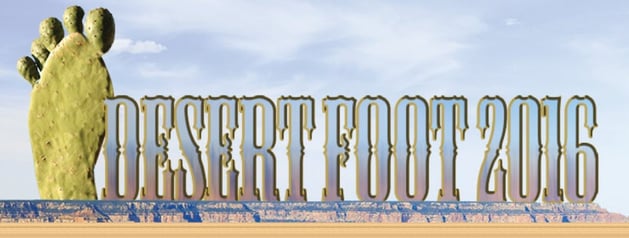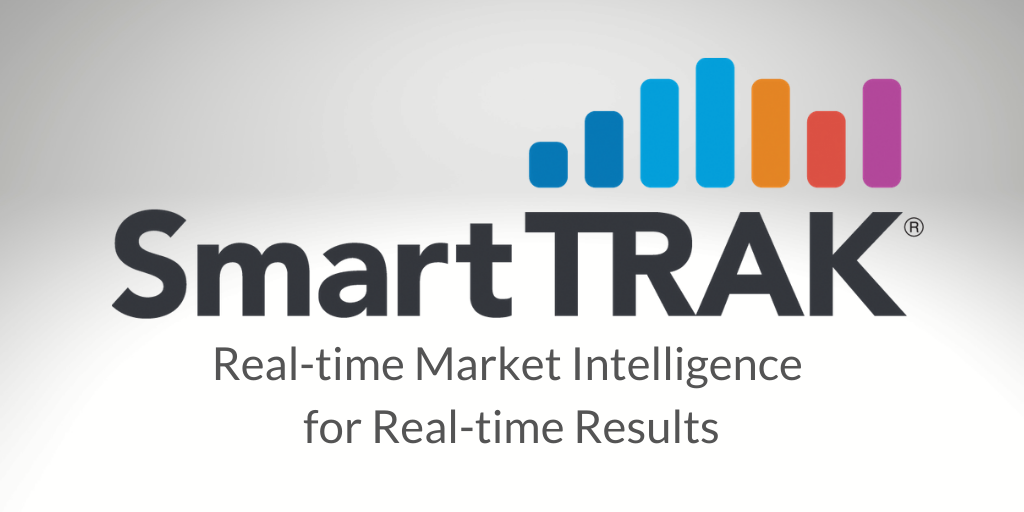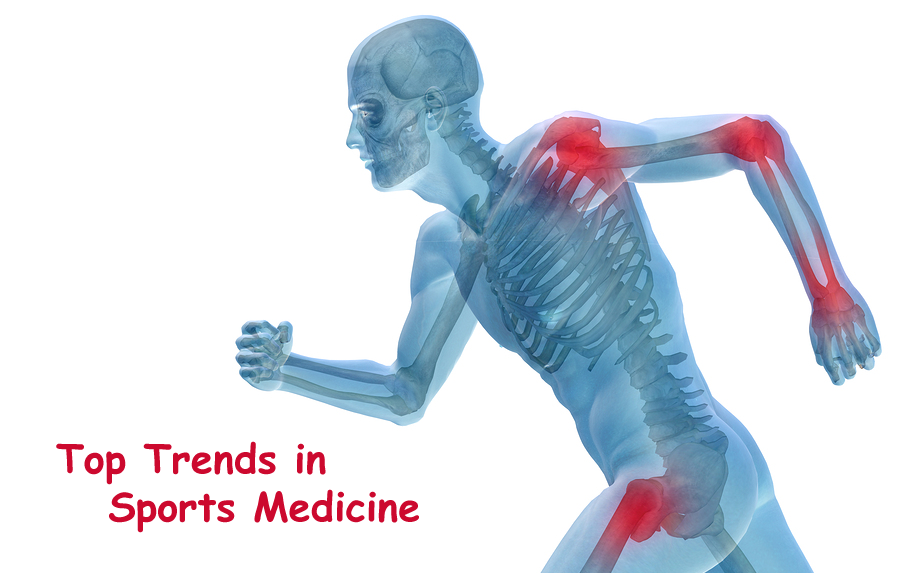Desert Foot: Targeting the high-risk diabetic VA patient population for wound care products
Importance of the VA/IHS Systems
One of the largest of the Federal Service healthcare systems, operating 151 Medical Centers, 300 Vet Centers and 827 Community-based Outpatient Centers, the VA is the largest integrated healthcare system in the US, with an annual budget exceeding $50B. The VA system services 8.76 million veterans annually with almost 25% of veterans being diagnosed with Type 2 diabetes, and roughly 2.6 million over 65 years of age.

Another federal service healthcare system, Indian Health Services (IHS), includes a network of 48 hospitals and more than 230 clinics, servicing 1.8 million American Indians and Alaska Natives, with these individuals twice as likely to be diagnosed with diabetes when compared to non-Hispanic whites. The prevalence of diabetic foot ulcers (DFUs) in the VA and IHS populations combined is estimated to be 110,000 in 2013; roughly 10% of the DFUs in the US, according to BioMedGPS' Wound Biologics module. (See Table 1 below for the DFUs in the VA and IHS systems)
Table 1: VA and IHS Diabetes and DFUs for 2013E| Million | % Diabetes | Diabetes | % DFUs | DFUs | |
| VA System | |||||
| 20 - 64 age | 6,200,000 | 20% | 1,240,000 | 3% | 37,200 |
| 65+ age | 2,600,000 | 33% | 858,000 | 8% | 68,640 |
| Total | 8,800,000 | 24% | 2,098,000 | 5% | 105,840 |
| Indian HS | |||||
| 25 - 64 age | 918,000 | 15% | 137,700 | 3% | 4,131 |
| 65+ age | 126,000 | 24% | 30,240 | 8% | 2,419 |
| Total | 1,044,000 | 16% | 167,940 | 4% | 6,550 |
| Total | 9,844,000 | 23% | 2,265,940 | 5% | 112,390 |
Source: BioMedGPS
The significance of the VA and IHS systems in the advanced wound care space is enormous and several companies have specifically targeted this market with wound biologic products. One conference dedicated to Federal Services Healthcare Professionals (VA, DOD, IHS, PHS), who serve patients at risk for diabetic foot ulcers and other chronic wounds, is the Desert Foot High Risk Diabetic Foot Conference held annually in Phoenix. This year's event had over 800 attendees and almost 90 companies exhibiting, with many of these companies showcasing skin/dermal substitute products.
Reimbursement Less Challenging
Reimbursement for products sold into the VA system or other federal facilities does not follow CMS or private pay reimbursement, making it an attractive space for many companies selling new products that have not yet garnered coding, coverage and payment from traditional insurers. Having a product listed on the Federal Supply Schedule (FSS) is recommended for selling into the VA or IHS systems – but is not mandatory. The steps for being included on the FSS, also known as the General Services Administration (GSA) Schedule, are straightforward but require significant documentation with the following requirements needing to be demonstrated.
- FDA Approval
- Financial stability
- At least 2 years in business
- Past performance
- Products commercially available
- Products compliant with trade agreements act
- Have a Dun & Bradstreet (D&B) Number
- Registered on the System for Award Management (SAM)
One company who has prospered in this arena without being listed on the FSS is Organogenesis, which sells Apligraf into the VA/IHS systems. Although it will require extra effort from the sales reps to initiate and process the paperwork – it can be done. A few companies that have had great success with the VA who do not have, or previously did not have, broad CMS or private pay reimbursement include Regenesis Biomedical and MiMedx. Regenesis Biomedical markets its Provant system for the treatment of pain, with the vast majority of its estimated $18MM in 2013 sales from the VA/IHS systems. MiMedx introduced EpiFix, a dehydrated amniotic tissue allograft to the VA/IHS systems in 2012, and its rapid uptake is one of the primary reasons VA facilities are being flooded by skin/dermal substitute products. MiMedx’ explosive growth is mainly the result of specifically targeting the VA system with its 27-person direct sales organization — many of whom are ex-Shire reps with experience selling skin substitutes, such as Dermagraft, into the VA system. The result was a doubling of MiMedx’ sales from $11MM in 2012, to over $22MM in 2013.
Skin Substitutes
Hoping to achieve the same success as MiMedx, skin/dermal substitute companies are eager to obtain a piece of the VA/IHS pie, which is estimated at $75MM to $90MM in 2013, according to BioMedGPS. In fact, the first two days of Desert Foot were primarily devoted to skin/dermal substitute products with sponsored presentations from market leaders (MiMedx, Organogenesis, Osiris, Shire, and Smith & Nephew), numerous CE credited presentations in which the product name, per say, was not mentioned, and a variety of workshops. In all, 16 companies marketing skin/dermal substitutes exhibited at the Desert Foot conference including Medline and Tissue Regenixwhich introduced new products. Medline launched Revitalon, a dehydrated amniotic tissue allograft, to compete with MiMedx, and Tissue Regenix launched DermaPure, an accellular human dermal allograft. (See Table 2 below for the list of companies and products present at Desert Foot.)
Table 2: Companies, Products and FSS Status| Company | Product | Description | FSS |
| ACell | MatriStem | porcine urinary bladder matrix | No |
| AlloSource | AlloSkin | human allograft skin | No |
| Amniox | Neox & Clairix | cryopreserved amniotic membrane | No |
| Applied Biologics | Flograft | cryopreserved human amniotic fluid | Yes |
| Harbor Medtech | Architect | equine pericardium | No |
| Integra | Integra Matrices | bovine tendon collagen and glycosaminoglycan | No |
| KCI | Graftjacket | acellular human dermal matrix | Yes |
| Medline | Revitalon | dehydrated amniotic tissue allograft | No |
| MiMedx | EpiFix | dehydrated human amnion/chorion membrane | Yes |
| Organogenesis | Apligraf | cell-based bioengineered tissue | No |
| Osiris | Grafix | cryopreserved amniotic tissue allograft | Yes |
| RTI Surgical | Matrix HD | acellular human dermal allograft | No |
| Shire | Dermagraft | cell-based bioengineered tissue | Yes |
| Smith & Nephew | Oasis | porcine small intestine submucosa | Yes |
| TEI Biosciences | PriMatrix | fetal bovine dermix | Yes |
| Tissue Regenix | DermaPure | acellular human dermal allograft | No |
Stem Cells Highlighted
The one distinct theme emerging from the sponsored presentations was the role of “stem cells” in healing chronic wounds. A presentation sponsored by Osiris on Grafix, a product comprised of extracellular matrix, mesenchymal stem cells (MSCs), growth factors, structural proteins and fibroblasts, summarized results of three in vitro tests supporting the presence of MSCs in Grafix and importance for favorable wound healing. MiMedx' presentation reviewed how EpiFix stimulates local MSCs, a powerful recruiter of stem cells, and functions as a “stem cell magnet”. Organogenesis also jumped on the “stem cell” bandwagon with a review of how Apligraf's stem cells are produced by keratinocytes inherent in the product. The company also challenged clinicians to “ask for the evidence” when it comes to products containing stem cells. On another front, numerous discussions took place on what type of collagen (i.e., Type I, III) optimizes the wound healing process. The sessions were essentially a crash course on the key features, benefits and advantages of the current technologies on the market.
Attractive Market
Many of the patients within the VA or IHS systems have multiple co-morbidities and are challenging for the clinicians who treat them, often requiring methods that go above and beyond to accommodate these individuals. Many of the patients in the VA are good, adherent patients who do the best to take care of themselves and improve their health situation, but some do not. At Desert Foot, one physician described these high-risk patients as HONDAS – Hypersensitive, Obese, Non-compliant, Diabetic, Alcoholic, Smokers.
Although the VA and IHS markets appear to provide quick opportunities; they require, as other markets do, good clinical evidence and a dedicated sales organization to be successful. In addition, the growing competition is fierce with numerous companies vying for the same space – it’s not a market for the faint of heart.
Read More: Susan Paquette, VP Wound SmartTRAK, to attend Desert Foot 2017.
Sources:
- VA population (http://www.va.gov/health/)
- VA population with diabetes (http://www.va.gov/health/NewsFeatures/20111115a.asp)
- Indian Health Services population (https://www.3rnet.org/locations/indian-health-service)
- American Indians and Alaska Natives with diabetes (http://minorityhealth.hhs.gov/templates/browse.aspx?lvl=3&lvlid=62)
- Native Indian Population Statistics 2006 (http://www.hunapstatisticsproject.info/TribeCategory/AllAmericanIndianPopulation.htm)





